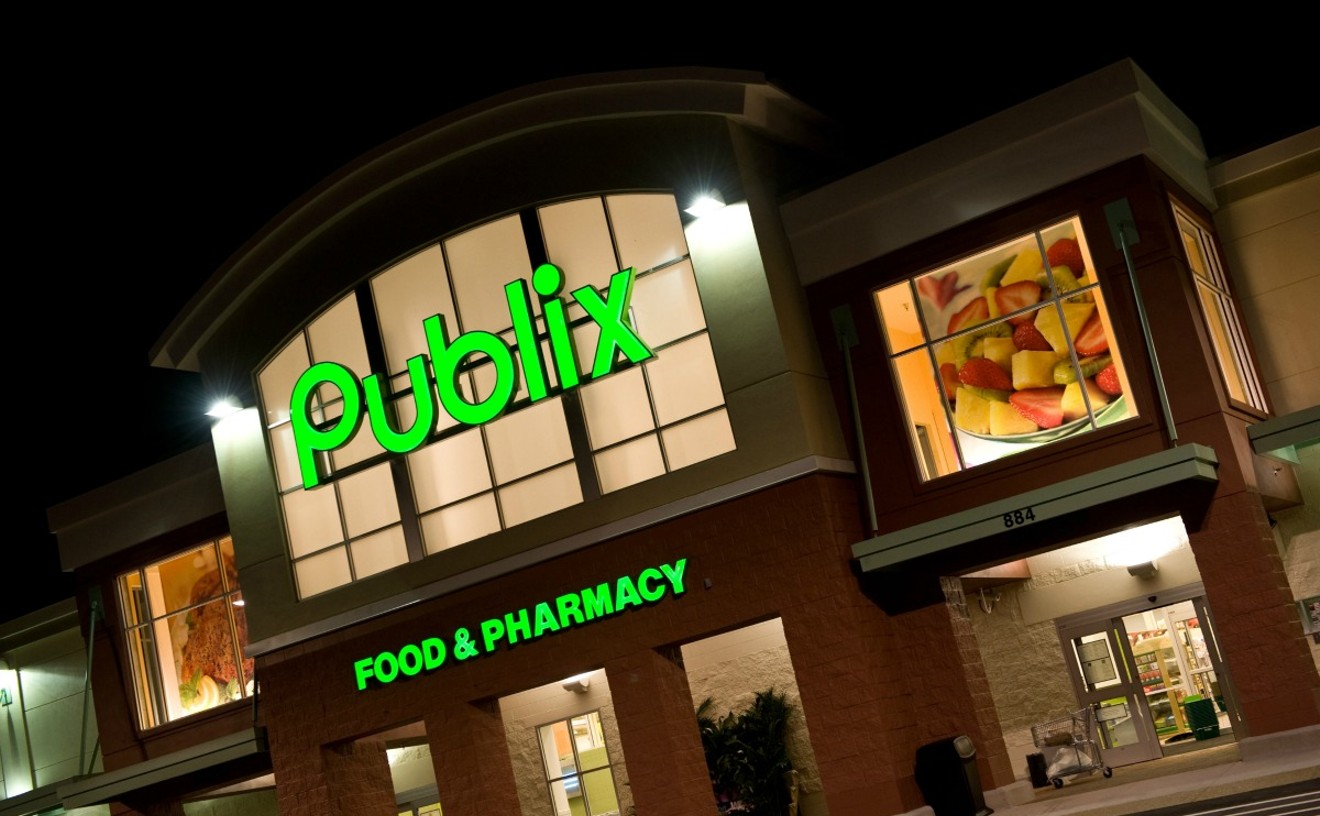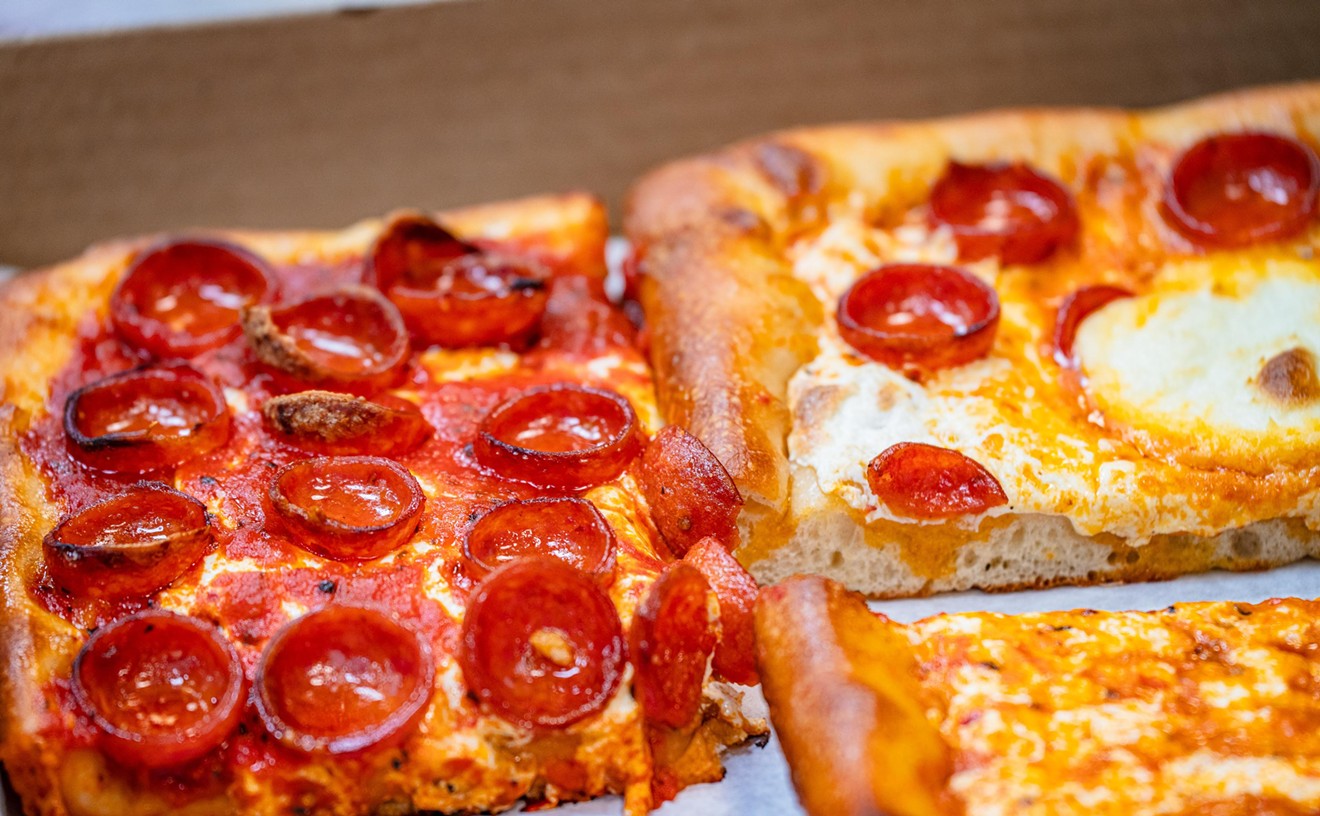Jeff McInnis grew up in a family of farmers. As the chef and partner at Yardbird Southern Table & Bar, he strongly advocates a farm-to-table ethic.
"People should know where the food they are eating is coming from," he says. "It's the responsibility of all chefs to know as well, and to source locally whenever possible."
But defining local food in Miami is complex. Retailers are continually pushing their own interpretations. The word local is constantly being thrown about at restaurants, and chefs keep producing menus that sound more like genealogies and less like descriptions of what's for dinner.
With this saturation, is it possible to tell the real deal from the phonies and freeloaders?
Well, this question is challenging from the outset, because there is no industry standard for "local" food. The distance from where food is grown or produced to the point of sale is up to the consumer to qualify. The range can be anywhere from 100 miles to within the same state or region.
But the benefits of sourcing food locally are clear, and it's generally accepted that shipping vegetables across the Pacific Ocean creates quite the carbon footprint. This method isn't ideal for the environment or for freshness and flavor.
National retailers and companies know all about the loose interpretations of food miles and about the increasing consumer desire for shopping locally. In 2009, Frito-Lay began marketing potatoes as locally grown by airing commercials featuring potato farmers. Florida residents got a glimpse of Steve Singleton, of Hastings, Florida, who advertised that the bagged chips could be considered locally grown because the potatoes came from his fields. (Hastings, by the way, is 309 miles from here, near Jacksonville.
In 2010, Walmart announced a new plan, one that focused on increasing the availability of local produce from small and medium farms in its supermarkets. The firm defined local produce as grown within the same state as the stores.
Even Sysco, a major purveyor to the hospitality industry, has a local program. Local Flavor offers ingredients to chefs and cooks who rely on the ease of receiving their same-state-grown produce in that big silver truck.
So, can local food come from a bag of processed potato chips or a huge retailer like Walmart? If the term is limited to only a range of food miles, you could easily say these retailers are not phonies. In that sense, they are the real deal.
But local food isn't that simple. The movement is about more than simply food miles or the ease of shopping with a big retailer. As McInnis says about Yardbird: "We do our very best to support the state of Florida and the waters surrounding it whenever possible. It's also important for us to support smaller farmers in general who are doing great things, and so we also dip into some neighboring states from time to time, including Georgia, Alabama, and Louisiana."
Shopping at Walmart or sourcing from Sysco will never be as rewarding as familiarizing yourself with the local farm community, as McInnis does for his restaurant. Of course, these companies' efforts to source locally offer huge benefits, environmentally and economically. But if you can pick up local strawberries before a quick stop at the electronics department for a new plasma TV set, it feels like you've stepped far, far away from local food.
The same defining challenges might arise for chefs and diners at restaurants. At Yardbird, McInnis does everything he can to keep the ingredients seasonal. He plans the menu according to harvests, and though he admits this does take the extra effort, diners can always be assured they will be enjoying seasonal ingredients. The same can be said for other great Miami chefs, such as Michael Schwartz of Michael's Genuine Food & Drink, a strong supporter of local food and community.
But it can be difficult to maintain this dedication. "It's not easy sourcing locally year-round in Miami, as the summer gets sparse with produce," McInnis admits. Consumers expect certain produce to be available all year, when nature simply cannot supply or cater to this demand. Regardless, if McInnis has to make a choice between local or not, he says, "Its simple -- whatever we can source locally, we do, and the rest we get from neighboring states."
Other restaurants mix local ingredients with shipped or imported ones. Salumeria 104, a trattoria serving regional Italian cuisine in midtown, offers a salad, verde del contadino, featuring Paradise Farms' mixed greens. In the case of this dish, local produce is interspersed with imported Italian ingredients and cooking methods.
Juan Rochaix, an excellent forager who has worked with some of Miami's most respected chefs, including McInnis, Norman Van Aken, Michelle Bernstein, and Kris Wessel, points out there are some restaurants sourcing locally and not advertising themselves as such.
On certain occasions, he has met representatives from Mandolin Aegean Bistro who are seeking local ingredients from Florida farms and produce centers. The restaurant does not advertise its efforts to select local produce even though it's going the extra step to do so. Why wouldn't a restaurant advertise that fact? Rochaix thinks it isn't necessary to advertise about sourcing locally. If you want to serve great food, you need quality ingredients. For him, this means local, fresh ingredients.
So, are Salumeria 104 and Mandolin Aegean Bistro serving what could be considered local food? Technically, yes, because they are supporting local farms. Even though the restaurants are not necessarily considered advocates of the movement, like McInnis or Schwartz, they are definitely participants and contributors.
Whether they are freeloaders because they aren't more publicly supporting local food, well, that's for the skeptics to decide. I think that even though they aren't out there advocating for local food, they are sourcing locally. To me, that makes these two restaurants the real deal.
Unfortunately, Rochaix did admit that there are some phonies out there. He's spotted farm names on menus from restaurants that have never actually sourced from those farms. After all, local food is a business and some restaurants are completely freeloading onto the movement.
There are ways to pick out the phonies though, and McInnis suggests one tip. He says, "If you see that the majority of items on a menu are not in season in the South, you can bet that restaurant is not focused on local food."
Home cooks are also facing some challenges. For some, it can be difficult to understand why the terms local and organic are not interchangeable, and why organic doesn't necessarily mean better when referring to smaller farms.
If you visit a farmer's market, it's likely that you will overhear some visitors asking farmer's whether their produce is organic or not. If the farmers say no, scoffs and judgmental looks might ensue.
But what these home cooks don't understand is that reaching organic certification can be very challenging for small, local farms.
"The ideal would be local and organic, however it's important that note that there are many factors and financial restrictions that make it very difficult for some small farmers to achieve an organic certification. Something as simple as having a road too close to your crops can disqualify you," McInnis says.
Reaching organic certification involves complying with basic rules, such as avoiding synthetic pesticides, farming in a sustainable matter and maintaining a strict record of paperwork. For small farms, obtaining the organic standard means hiring more personnel and investing money that sometimes they just don't have.
These factors lead Rochaix to insist that the issue between organic and conventional produce is much more complex than it seems. Many local, small farms are not organic certified, but they aren't conventional either. They shouldn't be considered phonies. Instead, Rochaix calls these farms, "unconventional."
McInnis understands this and, as a result, he sources from local farms that are dedicated to avoiding synthetic pesticides, chemicals or steroids -- even though they might not be certified organic. These farms are most definitely the real deal, and home cooks shouldn't be judgmental just because there isn't a green sticker slapped on the clamshell containers.
After years in the business, Rochaix understands the dilemma, and he sums up his advice to retailers, chefs and home cooks pretty well.
"Eating local is just about how much love you have for food," he says.
Defining local food is about more than just food miles. It's about community involvement and getting to know your farmer. It's about understanding that sometimes you can't have strawberries or tomatoes year-round, and that's okay. Sure, a stroll through the wide aisles at Walmart, or a delivery from the silver Sysco truck, might be easier, but Rochaix is right. Even though local food is not always the most convenient choice, it is always going to be the most loving, more delicious choice.
Follow Emily on Twitter @EmilyCodik.
Follow Short Order on Facebook and Twitter @Short_Order.










